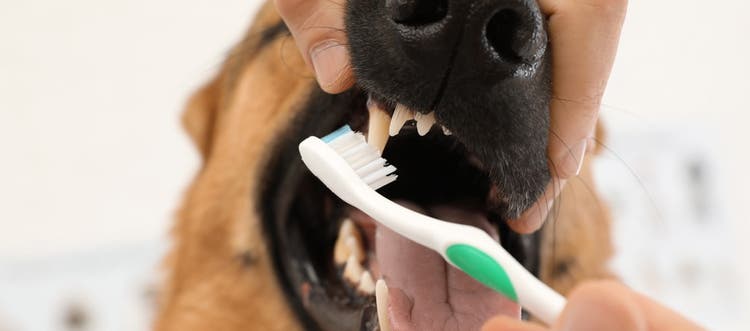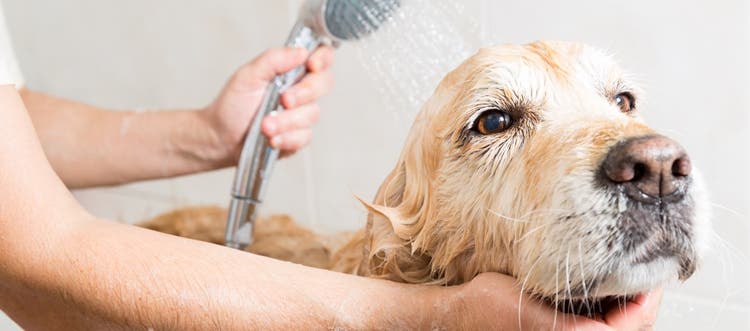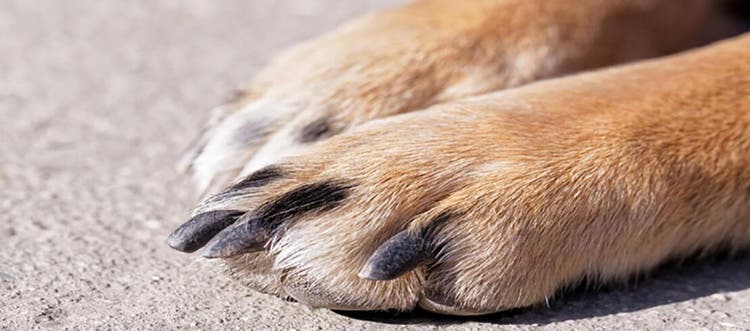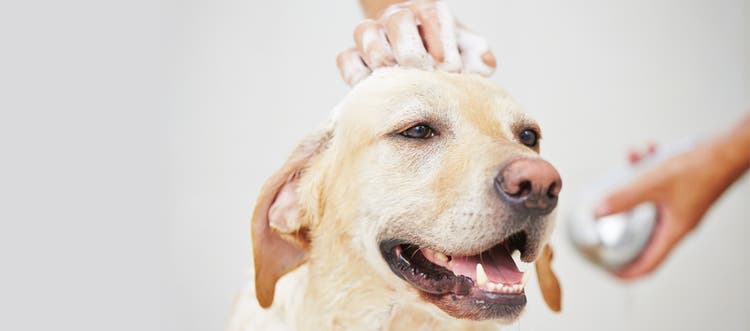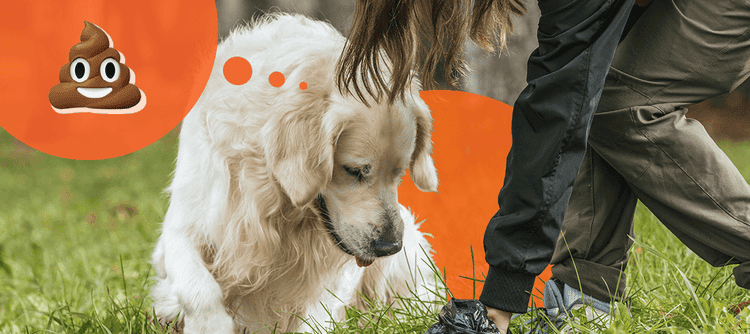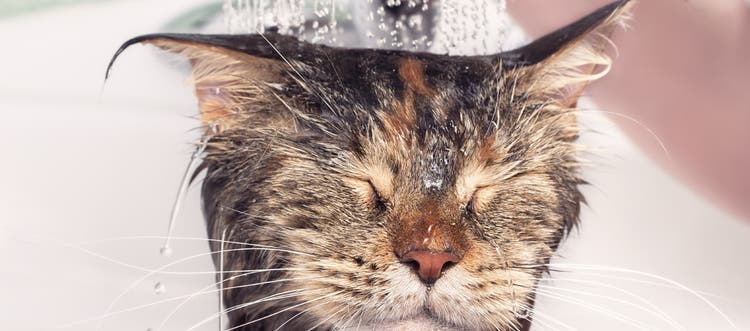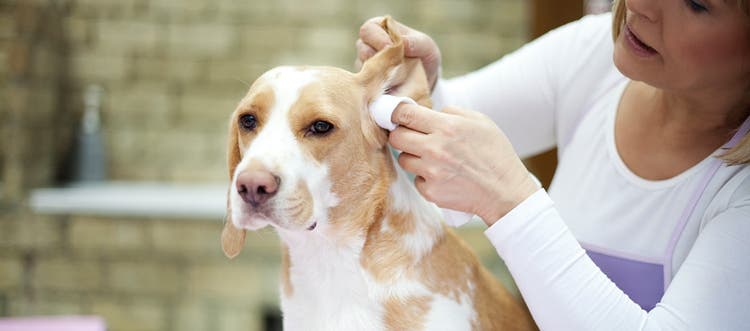The importance of maintaining your dog’s dental hygiene.
Do dogs need their teeth brushed? Although your dog doesn’t eat the same variety of foods you do, they can still have plaque buildup and gum disease. Brushing your dog’s teeth is an important part of maintaining their dental hygiene — and it’s a lot different than brushing your own teeth.
Below are answers to the most frequently asked questions about dog teeth cleaning, followed by a simple step-by-step guide to brushing your dog’s teeth.
Question 1: I’ve Never Brushed My Dog’s Teeth Before. Why Should I Start?
Research shows brushing your dog’s teeth not only helps improve their breath; it also enhances their quality of life. Regularly brushing your pet’s teeth can help fight plaque buildup that could lead to tooth decay, gum disease and other potential health issues, including cardiovascular disease.
Question 2: How Often Should I Brush My Dog’s Teeth?
Ideally, it’s best to brush your dog’s teeth twice a day. If that’s just not possible, aim for every day or every other day. If you brush too infrequently, your dog might need to start teeth brushing training all over again!
Question 3: Can You Use a Human Toothbrush and Human Toothpaste on Dogs?
No (ideally) and no. Your dog’s mouth is harder to navigate than your own, so the brush shape and handles of doggie toothbrushes are designed for easier maneuvering. There are also finger brushes that fit on a fingertip to make the process easier for pet owners. If you prefer to use a regular toothbrush, make sure to only use a brush with soft bristles to avoid irritating your dog’s teeth and gums.
When it comes to toothpaste, human toothpaste has much higher amounts of fluoride than dog-friendly versions. Fluoride can build up in your dog’s body, become toxic and make them very sick, so opt for a toothpaste specifically designed for dogs.
Question 4: Aren’t Dental Treats and Specialized Teeth-cleaning Products Enough?
Most vets will tell you that regular teeth brushing is far more effective than dental treats and teeth-cleaning products. It’s best to teach your dog to get used to having their teeth brushed — and then, brushing them regularly. Dental treats can also be included as part of a well-rounded plan to help keep your dog’s mouth clean and healthy.
Question 5: How Do I Brush My Dog’s Teeth?
Great question! Follow this simple, step-by-step guide to learn how to brush your dog’s teeth. As with all new routines and training, getting the hang of brushing your dog’s teeth will take time and patience, depending on your dog’s temperament.
Step 1: Get Your Dog Used to the Feeling
Your dog probably won’t like having fingers stuck in their mouth at first, so make the process a little easier: Put a small amount of peanut butter on your finger (not too much, so your dog doesn’t nip you by accident). While they’re licking your finger, gently try to open their mouth and massage your dog’s gums and teeth in a circular motion. Your goal is to do this for about a minute; work your way up to it. Try to touch every tooth and all of the gums, and be sure to tell your dog how good they’re being.
Aim to go through this routine multiple times each day for one to two weeks, or until you think your dog has gotten used to it. If your dog struggles letting you open their mouth, focus on touching the area right by their bite line. Once they’ve gotten used to that for a few days, slowly try to get them to open their mouth up for a few seconds. Keep doing this for a little longer each day.
Step 2: Start Using the Brush
After your dog gets over the barrier of having their teeth and gums massaged, it’s time to get them used to the feeling of a brush in their mouth. Ideally, try to do this with nothing on the brush at first. If your dog resists too much, you can try putting just a tiny bit of peanut butter on the brush to help ease the transition.
Using the same circular movements as before, work your way around your dog’s mouth. If you resort to using peanut butter on the brush, focus on using less and less each day and be sure to clean the brush thoroughly afterward. This step usually takes three to six days.
Step 3: Switch to Toothpaste
Once you’re confident that your dog is familiar with the toothbrush, dab a tiny amount of pet-safe toothpaste on it and try to brush their teeth and gums. If you used peanut butter at first, it probably won’t taste as good, but it still tastes like food, so your dog should get used to it within a few days.
If your pup is still resistant to the toothpaste, continue with step two, but without peanut butter on the brush. After each brushing, give your dog a tiny dab of toothpaste as a treat, followed by a small amount of peanut butter. Then over the course of a few days, start to space out the time between the toothpaste “treat” and the peanut butter chaser. Soon, your dog will think of the tiny bit of toothpaste as a reward.
Step 4: Master the Art of Brushing
Once your dog is used to getting their teeth brushed, focus on your technique. Using a circular motion, work your way around the top and bottom teeth, front and back. Ideally, you want to spend about 10 to 15 seconds on each area. Give your dog time to relax and close their mouth between each area you brush. The total brushing time should be around a minute, depending on your dog’s mood. And as always, be sure to tell your dog how good they’re being before, during and after.
If you have any additional questions about how to brush your dog’s teeth, or if you’re still not sure that you can do it on your own, talk to your vet for more hands-on guidance.
References
- Fritz, J. (2021, November 8) 5 Steps to Brushing Your Dog's Teeth (A Complete Guide). CanineJournal.com. https://www.caninejournal.com/brushing-dogs-teeth/.
- American Kennel Club. (2020, May 9) Toothbrushing Steps to Make Dog Teeth Dazzle. https://www.akc.org/expert-advice/health/how-brush-dog-teeth/.
- PenderGrass, J. (2019, January 18) How Often Should You Brush Dog Teeth and Cat Teeth? https://www.petmd.com/news/view/how-often-should-you-brush-dog-teeth-and-cat-teeth-37925.
- Stella, J. L., Bauer, A. E., and Croney, C. C. (2018, January 18) A cross-sectional study to estimate prevalence of periodontal disease in a population of dogs (Canis familiaris) in commercial breeding facilities in Indiana and Illinois. Public Library of Science. https://www.ncbi.nlm.nih.gov/pmc/articles/PMC5773197/.
